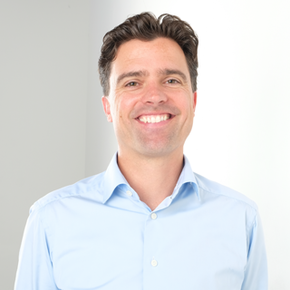Hundreds of thousands of Dutch people are eligible for subsidised transport because they can no longer arrange their own transport independently. For example, elderly people, or those with a chronic illness or limited mobility. For longer journeys, 'Valys' arranges their taxi transport. This is done by specialist passenger transport experts, Transvision, on behalf of the Ministry of Health, Welfare & Sport. Transvision has the important task of efficiently planning all Valys taxi rides – ranging from some 5,000 on an average day to 15,000 on a special day like Christmas. The more than 100 local carriers operating for Valys, combined with the longer distance of the journeys, makes planning complex and challenging. Through efficient transport planning, CQM managed to greatly reduce the number of kilometres driven for Transvision while also increasing customer satisfaction. Learn more about this case with real social impact…

Laurens van Remortele, CEO at Transvision (Dutch only), is committed to enhancing sustainability throughout the entire organisation and beyond, thereby making a significant societal contribution. He has been working with CQM to optimize Valys' complex transportation planning puzzle.
Planning Valys taxi transport more efficiently
“We wanted to plan Valys’ taxi services more efficiently,” says Laurens. “This was really necessary. Before we had CQM's taxi-combination algorithm, planning was done via the carriers themselves, planning their journeys based on availability within their postcode area. This regularly resulted in drivers returning ‘empty’ (without a customer) from a long journey from, let’s say, Eindhoven to Groningen. To avoid this, they could check via our site whether there was a ride available for the return journey. But to arrange this, they’d have to contact other carriers to swap rides, where possible. As you can imagine, this involved a lot of pre-work, numerous phone calls and much organising to arrange the desired route. At Transvision, we thought there had to be a better way of doing things.”
Automatic planning
“The taxi-combination algorithm plans and optimises, as you’d expect, automatically, with the aim of achieving higher vehicle occupancy, fewer driven kilometres, greater punctuality and more satisfied customers,” explains Frans de Ruiter, consultant at CQM. “And that succeeded! We’ve used location intelligence from our partner Geodan, who have mapping material with accurate road speeds and can convert addresses into coordinates. That input, which is crucial for calculating distances and coordinates using our state-of-the-art algorithms.”
Sustainability through reduced CO₂
“At Transvision, sustainability is high on our list of priorities,” explains Laurens. “Driving fewer kilometres means less CO₂ emissions, and we achieve this by organising occupancy better. Valys is a wonderful, social product, through which central government offers people support. With the taxi-combination algorithm you get more reliable & predictable transport, which results in greater customer satisfaction. Ultimately, we hope to be able to use the algorithm for other types of transport, such as seated patient transport. So we can make significant progress in those areas, too.”

Laurens van Remortele (left, Transvision) & Peter Hulsen (CQM).
Lots of data and regulations in transport planning
“The Transvision project remains a challenging one, because the world is constantly changing,” explains Peter Hulsen, partner at CQM. “An example is the introduction of the maximum daytime speed limit on Dutch motorways. You also have to deal with multiple stakeholders, including passengers, taxi operators, the government and Transvision itself. All of which affects the ability to plan transport effectively. Before the introduction of the taxi-combination algorithm, planners in some 80 different locations were all struggling with this complex puzzle. It sometimes took them anywhere between a half and a whole day to come up with a plan, which then still included 'empty' kilometres. With the algorithm, the calculation time has been reduced to half an hour. The planner determines the optimal route, with the highest occupancy and fewest kilometres, and taking into account all the aforementioned stakeholders.”
Higher customer satisfaction
“I’m delighted with the final result,” says Laurens. “As well as reducing the number of kilometres, and thereby emissions, drivers get to do what they enjoy most: bringing customers to where they want to be, without complaints. Because the drivers are first point of contact for customers, they get to hear how people really feel. Nowadays, that’s largely positive feedback, as passenger satisfaction has increased enormously."
No shine without friction
“I think it's really amazing,” concludes Laurens, “that we’ve succeeded in translating the technical idea we had in our heads into practice. We’d been thinking about something like the taxi- combination algorithm at Transvision since 2008. Then in 2016, we organised a 'planners’ race' where different parties could pitch their ideas, a competition won by CQM. CQM’s people don’t just deliver what’s been requested, they continue to ask the key questions. And they never just blindly start working on an assignment, but dare to start a genuine discussion. Having a 'you ask, we do’ mentality is easy. But now and then, you need to step on the brake or find another gear, and CQM does that. There’s no shine without friction, that’s what partnerships are all about!”
Also want to get to grips with your transport planning?
Contact Peter Hulsen or Frans de Ruiter. The Transvision project was achieved using the CQMaps route planning service. This tool calculates all interconnected distances between large numbers of locations in a very short time. Learn more about CQMaps.
If you’d also like to keep up-to-date with the latest news at CQM, you can follow us on LinkedIn or sign up for our digital newsletter.


